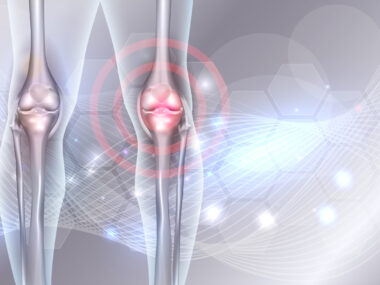Am I More Susceptible to Shinsplints Because of EDS?
A day of dog sitting leads to a chase — and pain
Written by |

I love dogs — I have two rescue dogs — but some days they sure give me a run for my money.
I was recently watching a friend’s dogs while she was out of town. My friend lives on a farm, like I do, but her farm is bigger than where I live. I had her terrier mix, Dobbie, on a leash because he tends to run off when his mom isn’t around, and I was trying to keep a close eye on her 9-month-old puppy, Lulu.
Typically, Lulu isn’t a wanderer, but I heard someone yelling from outside the barn that Lulu was chasing a car down the driveway. My friend’s farm isn’t nearly as rural as mine, and it sits on a pretty well-traveled road. While there is a gate at the end of the driveway, Lulu was about to squeeze through it behind the car. Ugh.
Tossing Dobbie’s leash to the person who had called for me, I took off at a sprint after Lulu. The gravel driveway is probably one-tenth of a mile long. I was wearing riding boots and half chaps, neither of which are meant for sprinting. I can walk in them for miles, and I often do, but running is another story.
The consequences
Thankfully, I caught up to Lulu just before she made it through the gate. Unfortunately, by running without warming up, I gave myself some serious medial tibial stress syndrome, otherwise known as shinsplints. That made me wonder if I’m more susceptible to shinsplints because I have Ehlers-Danlos syndrome (EDS).
After all, shinsplints refers to the overuse or inflammation of the muscles, tendons, and tissues that cover the bone in the lower leg. With EDS, it’s much easier for me to injure my tendons and ligaments. I remember frequently getting shinsplints as a teenager, seemingly more often than my soccer teammates. Now I’m curious if there’s a connection.
The article “Footcare in hypermobile Ehlers-Danlos syndrome,” published by Ehlers-Danlos Support UK, stated something I found to be pretty accurate: “There is a rough rule of thumb used by many health professionals that people with hypermobile joints experience largely the same type of overuse type problems as their non-hypermobile counterparts but do so more frequently and more severely.”
That’s exactly how I feel. Looking back, while I had a few unique injuries like a torn hip flexor, for the most part, I seemed to be injured more often and more severely. I’d also take longer to heal than most people.
I don’t know if an average person would’ve had the same physical response to such a short burst of high-level activity that I did when I chased Lulu. Sometimes it can be incredibly frustrating — one 30-second run now has me facing days of pain. But that’s life with EDS.
When things like this happen, I must remember that while I’m frustrated — and that’s OK — it does no good to stay that way. After all, it could’ve been worse.
Note: Ehlers-Danlos News is strictly a news and information website about the disease. It does not provide medical advice, diagnosis, or treatment. This content is not intended to be a substitute for professional medical advice, diagnosis, or treatment. Always seek the advice of your physician or another qualified health provider with any questions you may have regarding a medical condition. Never disregard professional medical advice or delay in seeking it because of something you have read on this website. The opinions expressed in this column are not those of Ehlers-Danlos News or its parent company, Bionews, and are intended to spark discussion about issues pertaining to Ehlers-Danlos.






Constance Frye Alsup
I bet it is probably connected. I suffered knee dislocations from 9-19. 3surgeries later, very rough Patella Tendon Transfer operational kept me going but never could run Now 68 and walking with leg braces and canes! Enjoy you life. But kept me out of a wheel chair. Diagnosed in 2016.
Kristie Cox
Hi! I am interested in contributing in any way I can. I am currently a medical and science writer for an autoimmune disorder patient advocacy group. I self-diagnosed EDS in graduate school and was later confirmed by a physical therapist, neurosurgeon, and SNP evidence found in my 23&me by yours truly. I have a PhD in Biochemistry, which greatly contributed to finding out what was "wrong" with me. My major symptoms and conditions are fibromyalgia, brain fog accompanied by daytime sleepiness, and structural back issues leading to nerve issues. I have had a 2 level ACDF.